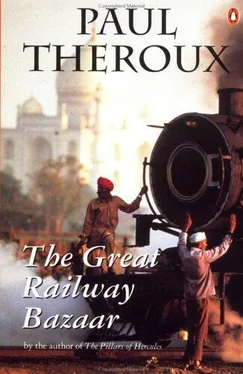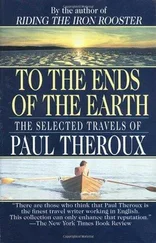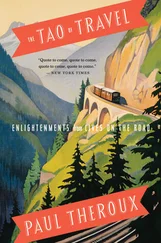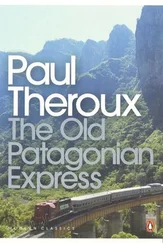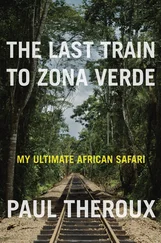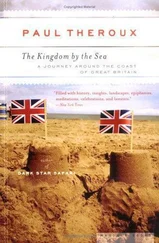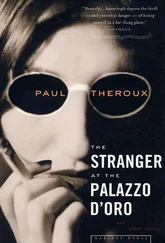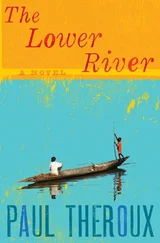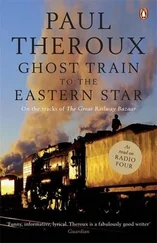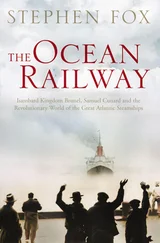It was cold that night; dogs barked in the muddy lane, and in spite of the chill my bedroom was filled with tormenting mosquitoes.
At Hue Station the next morning a tiny Vietnamese man in a grey gaberdine suit and porkpie hat rushed forward and took my arm. 'Welcome to Hue,' he said. 'Your carriage is ready.' This was the stationmaster. He had been notified of my arrival and had shunted on to the Danang passenger train one of the director's other private cars. Because Vietnam Railways has been blown to pieces, each separate section has a director's car on one of its sidings. Any other railway would have one such car, but Vietnam Railway is six separate lines, operating with laborious independence. As at Saigon, I boarded the private coach with some misgivings, knowing that my hand would tremble if I ever wrote anything ungenerous about these people. I felt loutish in my empty compartment, in my empty coach, watching Vietnamese lining up to buy tickets so that they could ride in overcrowded cars. The stationmaster had sped me away from the ticket window ('It is not necessary!'), but I had caught a glimpse of the fare: 143 piastres (twenty-five cents) to go to Danang, perhaps the cheapest seventy-five-mile ride in the world.
Dial, the translator, and Cobras One and Two boarded and joined me in the compartment. We sat in silence, peering out the window. The blocky whitewashed station building, a version of the Alamo, was riddled with bullet holes that had broken off pieces of the stucco, revealing red brickwork beneath. But the station, the same vintage as McTaggart's bay-windowed villa and the Morin Brothers' shop, had been built to last – a far cry from the patch of wasteground and cement foundations just outside Hue, where the First Marine Division's collapsed barracks and splintered obstacle course lay sinking in the mud. It was as if all the apparatus of war had been timed to self-destruct the day the Americans pulled out, leaving no trace of the brutal adventure behind. In the train yard, several armoured vans showed rips in their steel sides where mines had punched them apart. These vans were the homes of a number of sad-looking children. In most tropical countries adults stand, like those posed by William Blake, at the fringe of the echoing green, watching children at play. In Vietnam the children play alone, and the adults appear to have been swept away; you look for the parents among large groups of children, for the background figure of an adult. But (and this distorts the landscape) they are missing. That old woman carrying a child on her back, with the long muddy skirt and rain-drenched hair, is another child.
'Have you see the sink in the w.c.?' asked Dial.
'No.'
'You turn on the tap and guess what comes out?'
'Rust,'I said.
'Nothing,' said Cobra Two.
Dial said, 'Water!'
'Right,' said Cobra One. 'Paul, take that down. The taps work. Running water available. What do you think of that?'
But this was the only sink in the train.
The stationmaster had said that the line to Danang had been open for four months, having been out of action for five years. So far there had been no recent disruptions. Why its reopening coincided with the American withdrawal no one could explain. My own theory was that there were now no American trucks plying back and forth along the only road that goes between Hue and Danang, Highway One, the poignantly named 'Street without Joy'; this shrinking of expensive road traffic had forced the Vietnamese into the more sensible course of opening the railway. The war had become not smaller, but less mechanized, less elaborate. Money and foreign troops had complicated it, but now the Vietnamese had reverted from the corporation-style hostilities of the Americans to the colonial superstructure, slower communications, a return to farming, housing in the old buildings, and a transport system based on the railway. The American design of the war had been abandoned -the empty firebases, the skeletons of barracks, and the torn-up roads showed this to be a fact, visible from the passenger train clanking towards Danang with its cargo of Hue-grown vegetables.
The bridges on that line speak of the war; they are recent and have new rust on their girders. Others, broken, simulating gestures without motion, lay beyond them where they had been twisted and pitched into ravines by volumes of explosives. Some rivers contained masses of broken bridges, black knots of steel bunched grotesquely at the level of the water. They were not all recent. In the gorges where there were two or three, I took the oldest ones to be relics of Japanese bombing, and others to be examples of demolition from the later terrorism of the fifties and sixties, each war leaving its own unique wreck. They were impressively mangled, like outrageous metal sculptures. The Vietnamese hung their washing on them.
It was at the rivers – at these bridges – that soldiers were most in evidence. These were strategic points: a bombed bridge could put the line out of action for as long as a year. So at each side of the bridge, just above it on outcrops of rock, there were igloos of sandbags, and pillboxes and bunkers, where sentries, most of them very young, waved to the train with carbines. On their shelters were slogans flying on red and yellow banners.
Dial translated them for me. A typical one was, GREET THE PEACE HAPPILY BUT DON'T SLEEP AND FORGET THE WAR.
The soldiers stood around in their undershirts; they could be seen swinging in hammocks; some swam in the rivers or were doing their washing. Some watched the train, with their rifles at their shoulders, in those oversize uniforms – a metaphor of mismatching that never failed to remind me that these men – these boys – had been dressed and armed by much larger Americans. With the Americans gone the war looked too big, an uncalled-for size, really, like those shirts whose cuffs reached to the soldiers' knuckles and the helmets that fell over their eyes.
'That's VC up there,' said Cobra One. He pointed to a series of ridges that grew, off in the distance, into hills. 'You could say 80 per cent of the country is controlled by the VC, but that doesn't mean anything because they only have 10 per cent of the population.'
'I was up there,' said Dial. I kept forgetting that Dial had been a Marine. 'We were on patrol for about three weeks. Christ, we were cold! But now and then we'd luck out and get to a village. The people would see us coming and run away, and we'd use their huts – sleep in their beds. I remember a couple of times – it really killed me – we had to burn all their furniture to keep warm. We couldn't find any firewood.'
The mountains had begun to rise, acquiring the shape of amphitheatres with a prospect of the China Sea; eerie and bare and blue, their summits smothered in mist, they trailed smoke from slash-and-burn fires. We were on the narrow coastal strip, moving south on the patchy shoreline that still belonged to the Saigon government, between the mountains and the sea. The weather had changed, or perhaps we had finally been dragged free of the drizzle that was constant in Hue. Now it was sunny and warm: the Vietnamese climbed up to the roofs of the coaches and sat with their legs hanging past the eaves. We were close enough to the beach to hear the pounding surf, and ahead in the curving inlets that doubled up the train, fishing smacks and canoes rode the frothy breakers to the shore, where men in parasol hats spun circular webbed nets over the crayfish.
'God, this is such a beautiful country,' said Cobra Two. She was snapping pictures out the window, but no picture could duplicate the complexity of the beauty: over there, the sun lighted a bomb scar in the forest, and next to it smoke filled the bowl of a valley; a column of rain from one fugitive cloud slanted on another slope, and the blue gave way to black green, to rice green on the flat fields of shoots, which became, after a strip of sand, an immensity of blue ocean. The distances were enormous and the landscape was so large it had to be studied in parts, like a mural seen by a child.
Читать дальше
